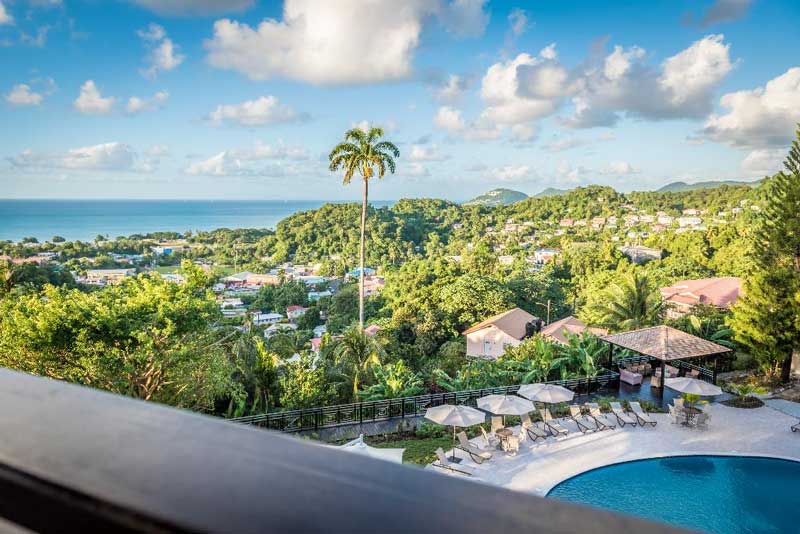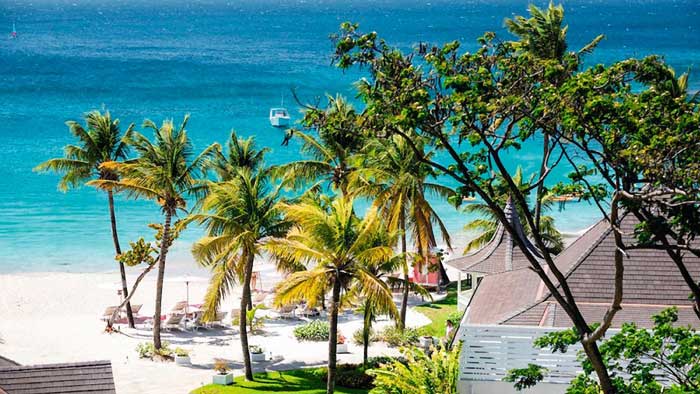When is the best time to visit St Lucia?
In terms of temperature St Lucia can pretty much be considered a year-round destination with the mercury always sitting somewhere between 24-32°C. However, the island does have two distinct wet and dry seasons which may influence the time of year you travel.
The dry season in St Lucia falls between December and May, with February receiving the least rainfall of any month. These are also the coolest months of the year to travel, with average daytime temperatures ranging from 24-27 degrees. This is still plenty warm enough for most people to sunbathe and enjoy the beach and can actually be a great time to visit as the heat and humidity isn't too much.
The wet season begins towards the end of May, with temperatures and humidity rising and downpours becoming much more frequent. As with most Caribbean islands, the rain doesn't usually last long and it's unlikely that travelling in the wet season would ruin your experience of the island.
July and August tend to be both busy and hot, and there is also the possibility of hurricanes depending on the situation that season. These months are therefore best avoided if you can travel at a different time of year.
Arguably the best time to visit St Lucia is January or February, with the lush landscapes still being green from the wet season but the weather offering the most mild, clear, dry days.

What is there to do in St Lucia?
St Lucia offers a little bit of something for everyone, with everything from outdoor activities and a plethora of beaches, to on-site spas and luxurious restaurants so you don't have to venture far to enjoy the island.
For those who love the great outdoors, there are hikes to the top of Pigeon Island and the grand Piton Mountains, ziplining through the jungle, kayaking on the Roseau River and even the option to drive through a volcano! Travellers can also enjoy a round of golf overlooking the ocean, take a snorkelling trip out to swim with turtles or simply recline on the beaches and coves dotted around the island.
The landscapes here are absolutely breath-taking, so you'll want to take your camera with your when you head out to discover waterfalls, rainforests, mountains and beaches.
St Lucia is also an island of many festivals, so if you're lucky your trip will coincide with one of the country's colourful, cultural celebrations! The Saint Lucia Jazz and Arts Festival happens in May, the St Lucia Carnival falls in June/July, Mercury Fest in the height of summer is the time for partying on the beach and 13th December sees the island celebrate National Day, also known as The Festival of Light.
What should I know before visiting St Lucia?
St Lucia is a colourful, eclectic, welcoming island that's considered one of the safest in the Caribbean so is a great option for those visiting this region for the first time. But, as with any island adventure, there are a few things to bear in mind before travelling that will help make your trip even easier and more enjoyable.
Unless you're staying in an all-inclusive and don't plan on travelling anywhere around the island, it would be wise to bring some cash (preferably US Dollars) as withdrawing money from ATMs on the island can be a bit temperamental. It's a good idea to exchange some cash to Eastern Caribbean dollars when you get there too, so that you can buy food from local markets and enjoy lots of experiences without having to worry about using your card.
It's also worth noting that renting a car can be quite expensive and somewhat stressful if you're not used to driving in foreign countries, but that taxis and resort shuttle services are pretty reliable and are usually enough for all your holiday needs.
Last by not least is that St Lucia does not change its clocks to match up with Daylight Savings Time, so it's important to keep this in mind when planning your trip back to the airport to catch your flight during the summer months!




